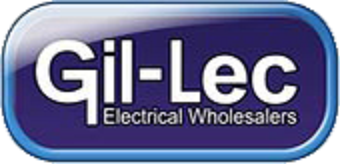We use cookies to improve your experience, to personalise content, to provide useful features, and to analyse our traffic and measure performance. By using this site, you agree to our use of cookies. Learn more.
Electrical Regulations and Bathroom Zones
Since electricity and water make for a potentially lethal combination the UK Electrical Wiring Regulations divide the bathroom into four zones, determined by their proximity to water sources such as the bath, shower or sink. The zones determine what type of electrical product may be installed. Return to Bathroom Fans

Bathroom Zone 0:
The bath or the shower tray; i.e - can physically hold water. Electrical items installed into these areas, such as submersible lights must be low voltage, SELV (Safety Extra Low Voltage - no higher than 12V), and rated no lower than IPX7.
Bathroom Zone 1:
The area directly above zone 0 to a height of 2.25m or ceiling. Electrical items installed in this area must have an IP rating of IPX4 or higher. Items installed into zone 1 can be mains voltage, but if so must be fitted to a 30ma RCD. Low voltage items can also be installed in this area, but the transformer must be located outside of zone 2.
Bathroom Zone 2:
This is the zone beyond zones 0 and 1, continuing 0.6m horizontally and up to 2.25m vertically. As with zone 1, mains voltage items must be fitted to an RCD, and low voltage items’ transformers must be installed outside of zone 2. IPX4 or higher protection is required. Wash Basins are classified as being in zone 2.
Bathroom Zone 3:
Any lighting or extractor fan can be installed in this area, as it does not have an IP rating. Apart from shavers and toothbrushes though, no portable electrical equipment is allowed in this area.
Any electrical item approved for use in a zone may be used in another zone with a higher number, but not in a lower number zone. For example a zone 1 extractor fan may be used in zone 3, but not vice versa.
Electrical Items and IP Ratings
Ingress Protection (IP) rating describes an electrical item's protection from solid objects and water. The first digit, (often replaced by an 'X') relates to solids such as fingers, insects or dust, while the second digit, and the one we are concerned with, relates to its protection from water and moisture. The higher the number, the more protection it has:
The second digit - protection from liquids:
X0: no protection from liquids
X1: protection against vertically falling drops of water (e.g. condensation)
X2: protection against direct sprays of water up to 15 degrees from vertical
X3: protection against direct sprays of water up to 60 degrees from vertical
X4: protection against water sprayed from all directions - limited ingress permitted
X5: protected against low pressure jets of water from all directions - limited ingress permitted
X6: protected against high pressure jets of water (use on ship deck) - limited ingress permitted
X7: protected against the effects of immersion between 15cm and 1m
X8: protected against long periods of immersion under pressure
This information is intended as a guide only. All electrical works must be carried out by a fully qualified and registered professional electrician.
